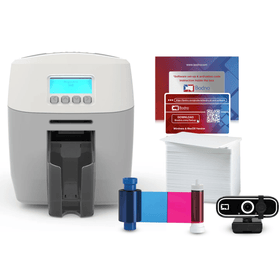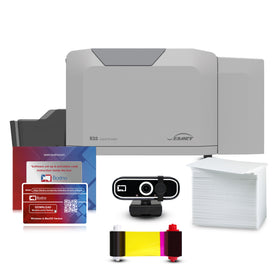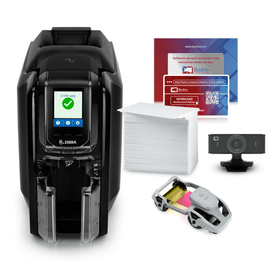There are many different types of ID card printers available in the market. All has claim to offer the best services to their users. Although it is highly suggested to know your needs and weigh the features offered by the ID card printer in order to have the best experience to the fullest. Below are three main aspects when choosing an ID card printer.
Printing Requirements
All ID card printer manufacturers offer two types of ID card printer models to meet the demands of the user – single-sided and dual-sided ID card printers.
Single-sided ID card printers are user friendly, compact, and generally more affordable than dual-sided ID card printers. However, the single-sided ID card printers can only print information specifically on one side of the cards.
Dual-sided ID card printers can print on both sides of the cards. This makes dual-sided ID card printers more versatile and resourceful than single-sided ID card printers.
Encoding Options
Different types of ID card printers come with different encoding options. The three main encoding features that you can get in most ID card printer models are magnetic stripe, contact smart card, and contactless smart card. ID card printers using magnetic encoding technology can print and encode data on the cards within the magnetic stripe.
On the contrary, both contact smart card and contactless smart card encoding uses an embedded chip to encode data on the ID and access cards. The only difference between the two is that contact smart card encoding requires the card to be inserted in a device in order for the data to be read, whereas contactless smart card encoding can be simply passed within the range of a radio frequency device to read the data.
Security Features
Most current ID card printer models has the laminating feature to add more security to the printed cards. The added lamination makes it difficult to tamper or duplicate the data. In addition, it gives ID cards another extra layer of protection against the common damaging elements, such as dust and moisture, and gives it a longer lasting quality lifespan.
Some ID card printers support hologram printing to add more security against counterfeits. Another additional type of ID card printing is the retransfer ID card printers, which offers an unmatched print quality and lamination on uneven surfaces. Some examples of retransfer printing are pre-punched cards, proximity cards, and smart cards.













 Software
Software Upgrades
Upgrades Support Plans
Support Plans Self Serve
Self Serve Printer Setup
Printer Setup



